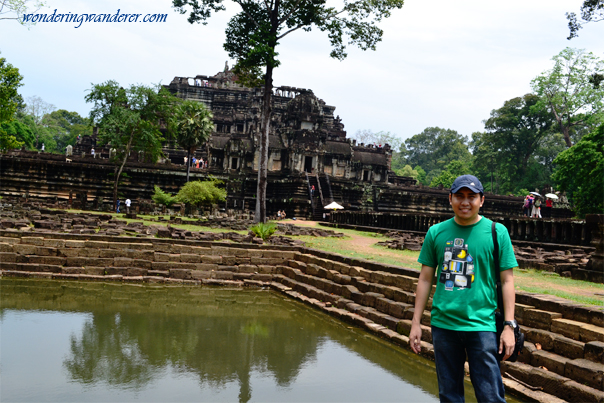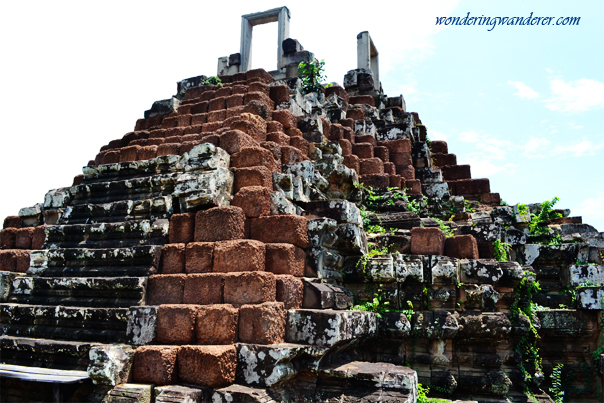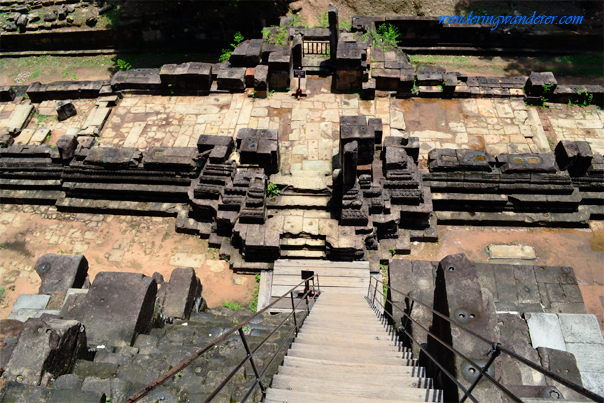Baphuon Temple is a grand three-floor structure in Siem Reap that was built one century ahead of the Angkor Wat. On top of being one of the biggest ancient temples in Cambodia—it’s also one of the highest. Its architecture is undeniably magnificent and one of the most innovative during its era. A monumental marvel that is proudly Cambodian.

This temple is rich in culture and history of Cambodia’s glorious past. A short tour here will take you to a time when Cambodia’s monarchs were proudly standing on top of this temple and celebrating with its people what they have wonderfully accomplished. You can picture Cambodia’s ancient military along with the dancing performers and the citizens who have gathered together to witness the inauguration as you explore its peak.

Short History of Baphuon Temple
Baphuon Temple was constructed in the middle of the 11th century during the rule of King Udayadityavarman II. It was originally dedicated to the Hindu deity Shiva but was later converted to a Buddhist temple in the 15th Century. It was redesigned to appear like a reclining Buddha that’s why one of the towers had to be demolished.

Most of the temple’s parts collapsed during the 20th Century so a major project to restore the Baphuon Temple was started. The process required dismantling and re-constructing the temple so that its core could be re-enforced. This project was interrupted during the Cambodian civil war in 1970 and was only resumed again in 1996. It was referred to as the largest 3D jigsaw puzzle in the world that took 16 years to get finished. It took a total of 51 years of work before it was finally reopened on July 3, 2011.

Exploring the Baphuon Temple
We were really lucky that we went to Cambodia at a time when this temple was already reconstructed. It was a pleasure to see how its architecture is totally unique compared to the first two temples that we’ve visited. We headed to this temple after a short visit at the Wat Preah Ngok shrine.

I noticed how despite its age and location, the temple’s design seems to resemble some European buildings—especially the roofs. I find the temple’s arcs and tiled roofs to be very similar to the design of large Christian Cathedrals or European government buildings. It’s a fascinating coincidence coming from an amusing building.

Looking at the size of the blocks, it’s amazing how they were able to move just one of those using primitive tools. Our guide mentioned that elephants were also used to help with the construction. Making these large blocks slide up to reach the topmost part of the temple would be the most challenging.

Top of the Temple
It rained when we went to Bayon Temple but it suddenly became very hot when we got to Baphoun Temple. My wife Juliet had to chill out a bit and skipped on climbing up the temple. I went up to the top despite the heat and my effort was rewarded by the wonderful view of its surroundings. I guess plenty of visitors skipped climbing up as well because there were just two other visitors who went up there.

The first thing that you’ll notice when you reach the very top is the altar that resembles a Mayan pyramid. Two doors are still standing strong on top and you can only imagine how it used to look up there by observing one of the intact towers. What I find to be the best view up there is the angle where you’ll see the two towers along with the long stretch of the pavement and the pond.

Temple Design
Unlike in Angkor Wat and Bayon Temple, we noticed that this temple doesn’t have any statues. We saw some wall carvings that depict some animals and locals but they are on light colored stones which seem to have been added during the reconstruction. What I see as part of the original structure are the flowery-patterned wall carvings.

The elegantly formed foundation looks robust and sturdy. It’s amazing how they were able to smoothen the wall’s curved horizontal lines. It seemed like they were just making a pot. The entire body of the temple looks massive and imposing like a medieval castle. Its overall design is undeniably remarkable for its time.


2 thoughts on “Baphuon Temple – Siem Reap, Cambodia”